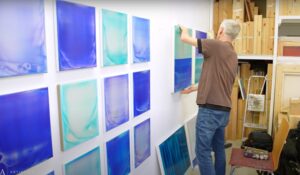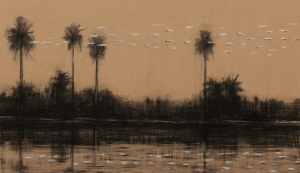How do you define taste? This question has fascinated philosophy for nearly two centuries. It has become scientific, and the work of definition of this notion has involved many fields of thought. A matter of time, period or references, taste seems determined. We can circumscribe an era and rely on moral to understand it. But then, would the taste evolve? Then, each person from the same artistic time or even from the same place would be determined to share the same taste?
With this questioning, we present three contemporary French women sculptors, whose aesthetic approaches differ. Their work is presented here through three notions of taste that coexist in time and space, we will roughly define them as the contemporary expression of three feelings: the Beautiful, the Sublime and the Camp.

Princesse Sara, Cécile Raynal
The relativity of taste particularly complicates its definition. If taste is relative, it is because it is in the order of affect, that it touches the senses in a non-rational way. The taste is everywhere. For American author Susan Sontag: «There is taste in people, visual taste, taste in emotion – and there is taste in acts, taste in morality. Intelligence as well, is really a kind of taste: taste in ideas.
For the author, taste is even more difficult to define if it is contemporary: « To snare a sensibility in words, especially one that is alive and powerful, one must be tentative and nimble.”
Thus, reaching a definition of taste can only go through the definition of aesthetic categories created from the effect produced by the objects. The only objectivity you can have is definitional objectivity that is almost scientific.
The three contemporary sculptors that we present to you are all from the same time and the same space, but experience has determined them to create in a particular way.
Marine de Soos is a French sculptor born in 1967. She specialized in figurative sculpture in bronze, and in the production of very realistic animal and human figures. Smooth in appearance, Marine de Soos’s sculptures respect the proportions and visual sensations produced by the elements they represent. Thus, the realism of Marine de Soos’s works ranks her work on the side of what satisfies judgment, what reassures and touches by virtue of a satisfaction of the senses.

Woman with a lantern, Marine de Soos
Cécile Raynal is a French sculptor born in 1966. Her sculpture is a way of exploring the world and it finds its origin in a documentary register. It is within the framework of residencies carried out in connoted places – such as hospitals or prisons – that the artist creates. Her portraits are rough and mingle with figures from tales or myths and other animals. Thus, Cécile Raynal’s works are hybrid, and her almost monstrous figures, with a charred aspect but deeply human challenge viewers.

Duo d’Aude, Cécile Raynal
Born in 1960, Chésade produces apparently very classic sculpture. Her art offers the possibility of an interesting work of definition of the notion of taste. She manages to amaze the judgment with animal sculpture in bronze. Some would say that his theme is proper to satisfy judgment, but the ornaments and finishes with which she adorns her work help to make his sculptures quite special. Not satisfying judgment immediately but requiring an understanding of an intention to make art, Chésade’s works can confuse judgment.

Le Bel Homard, Chésade





